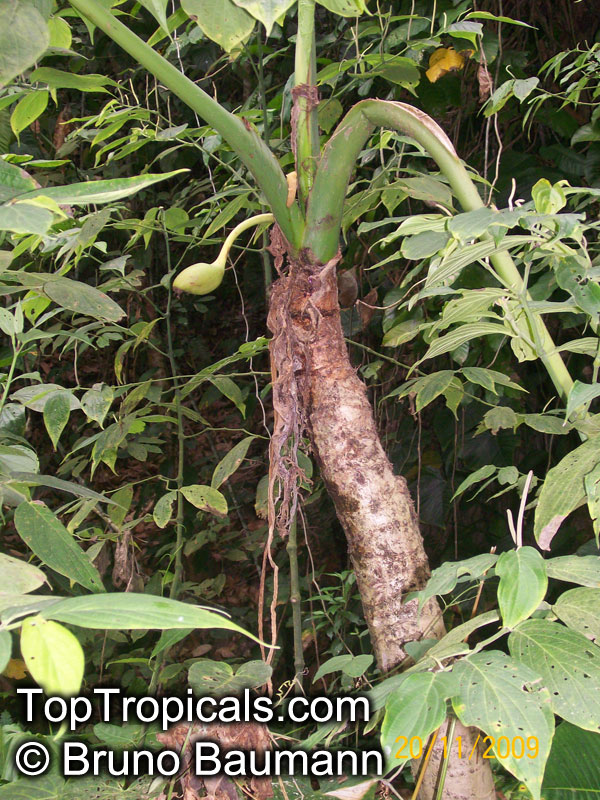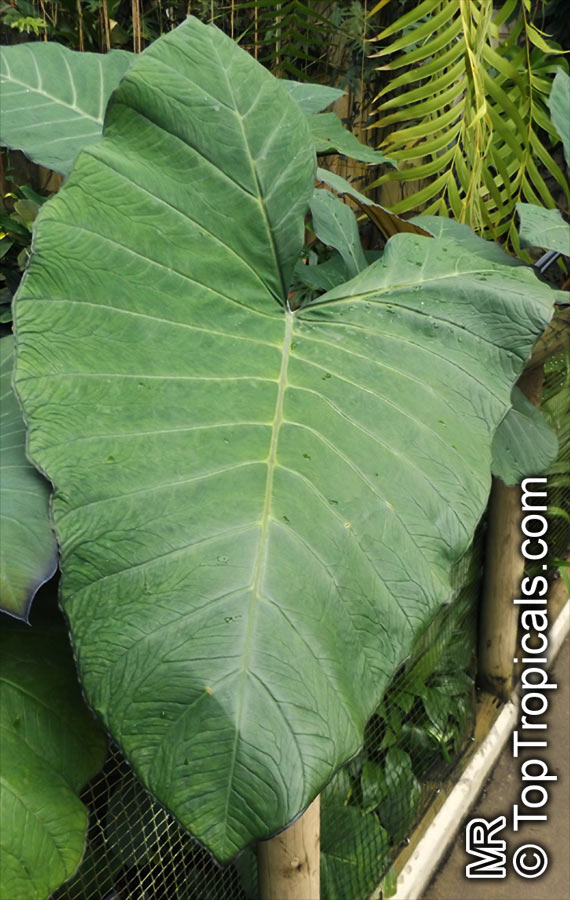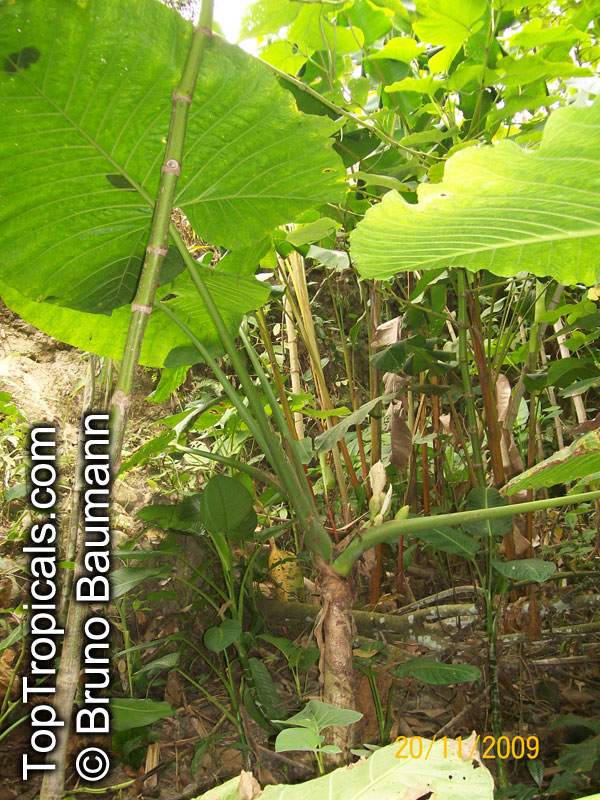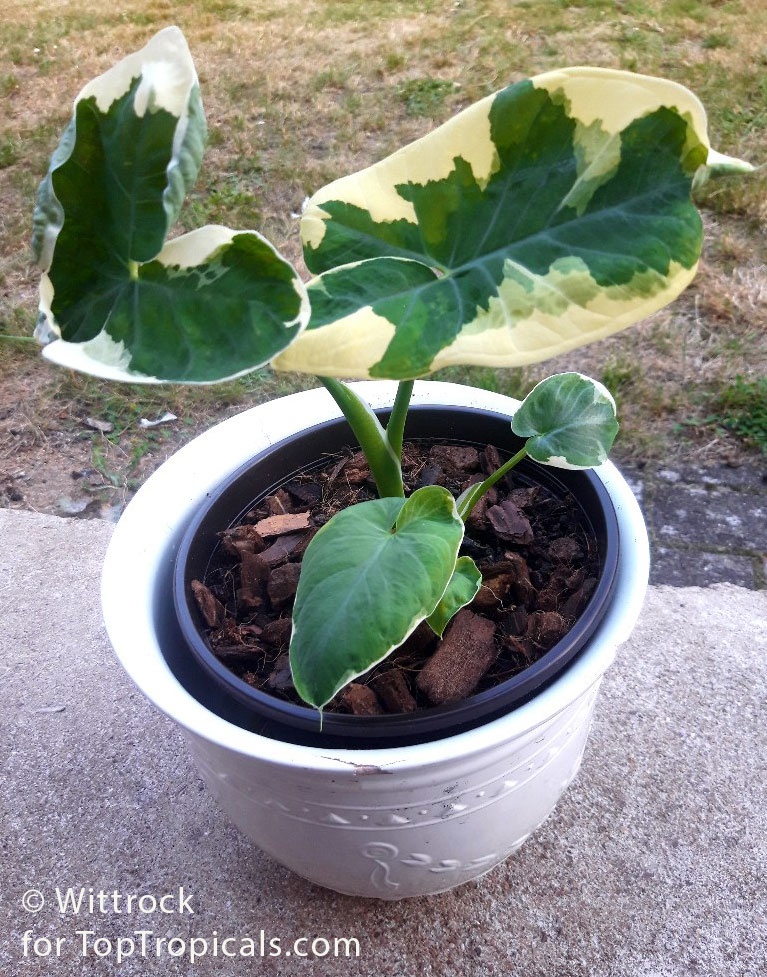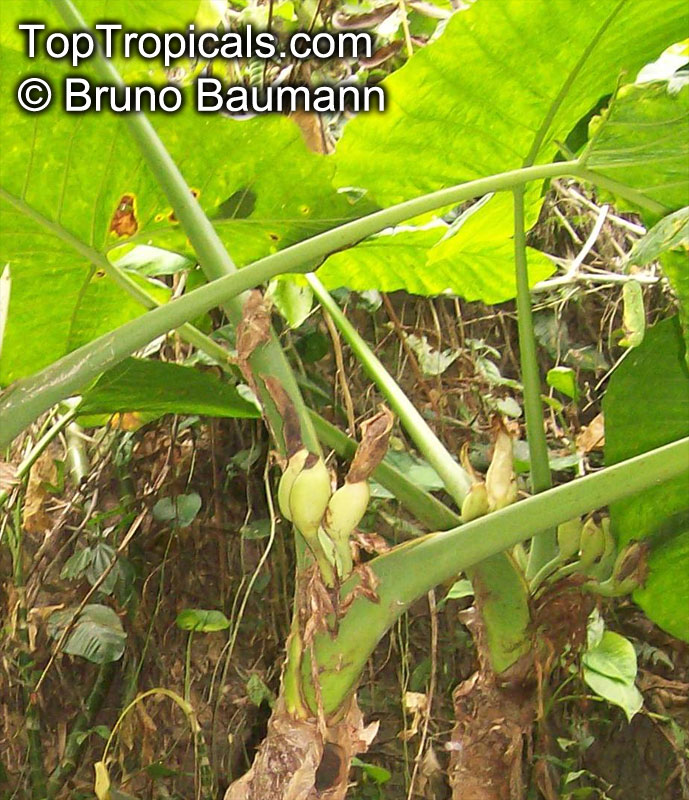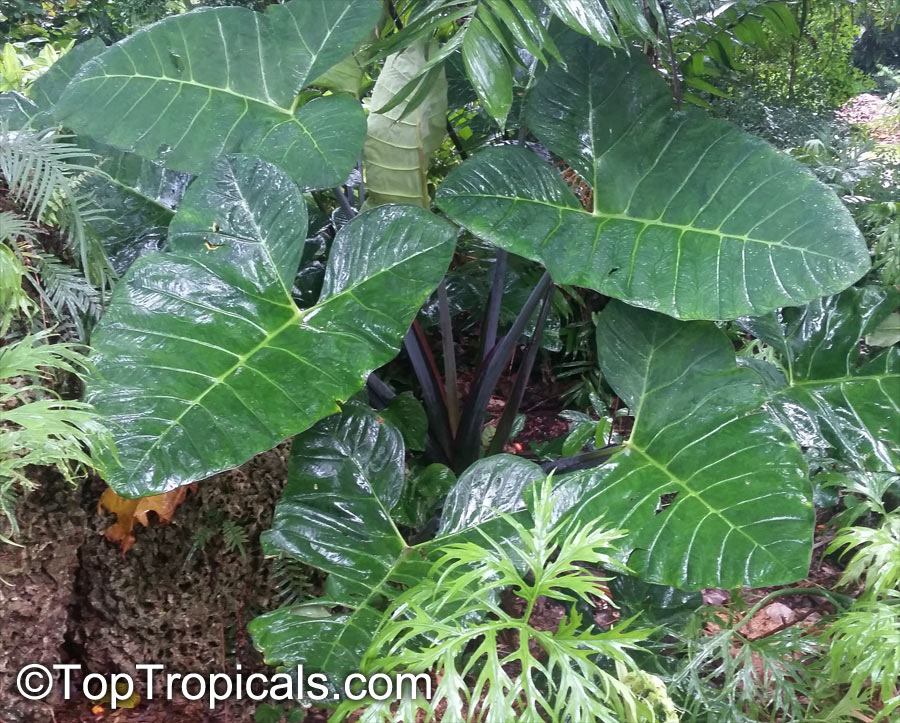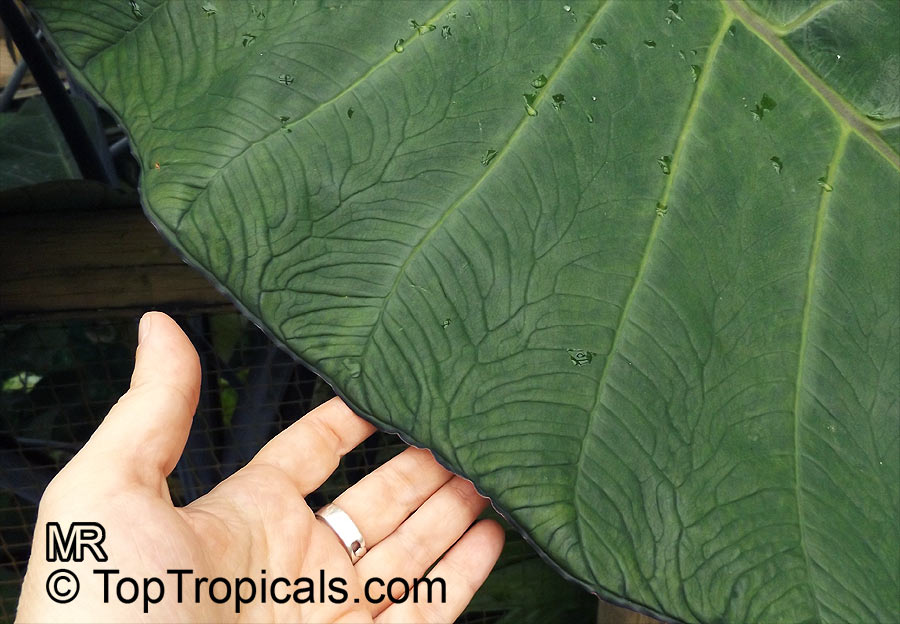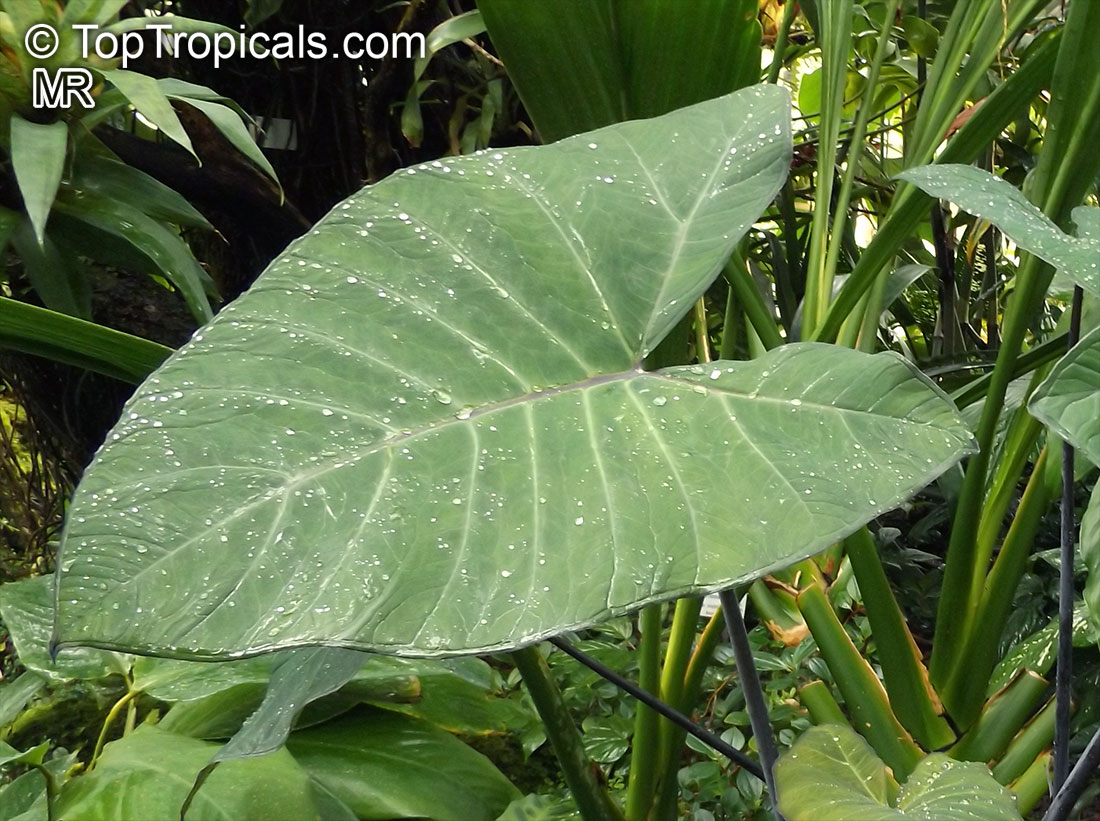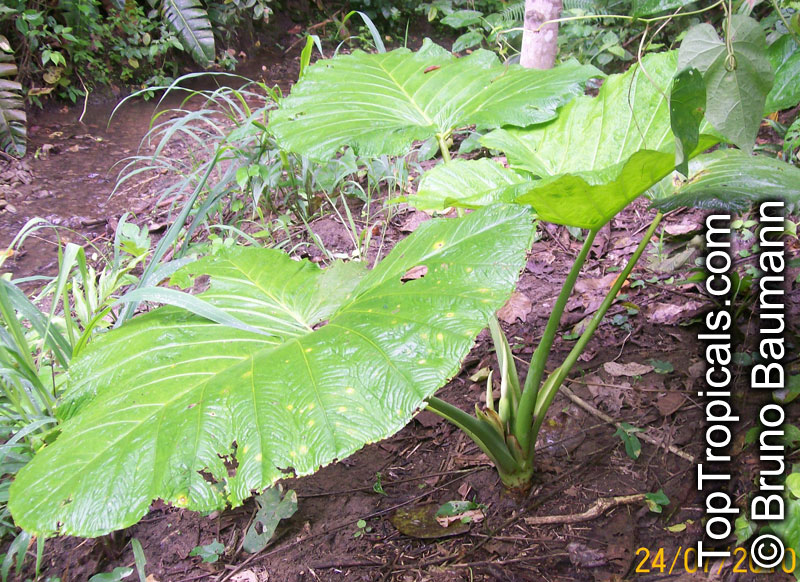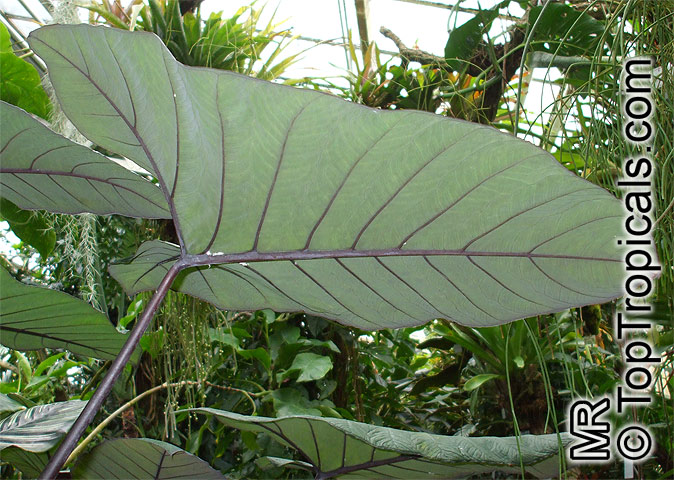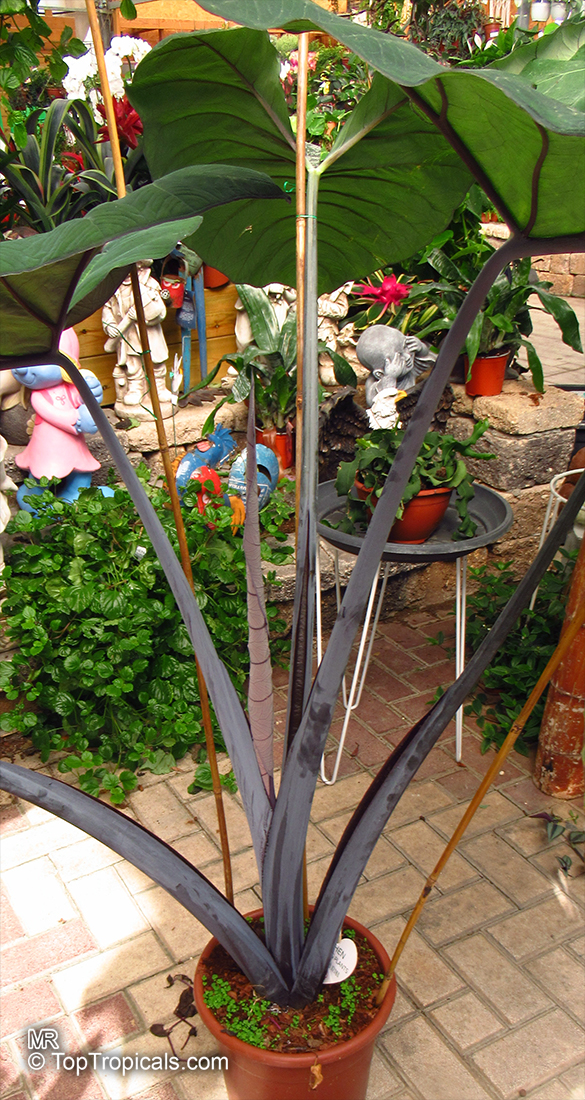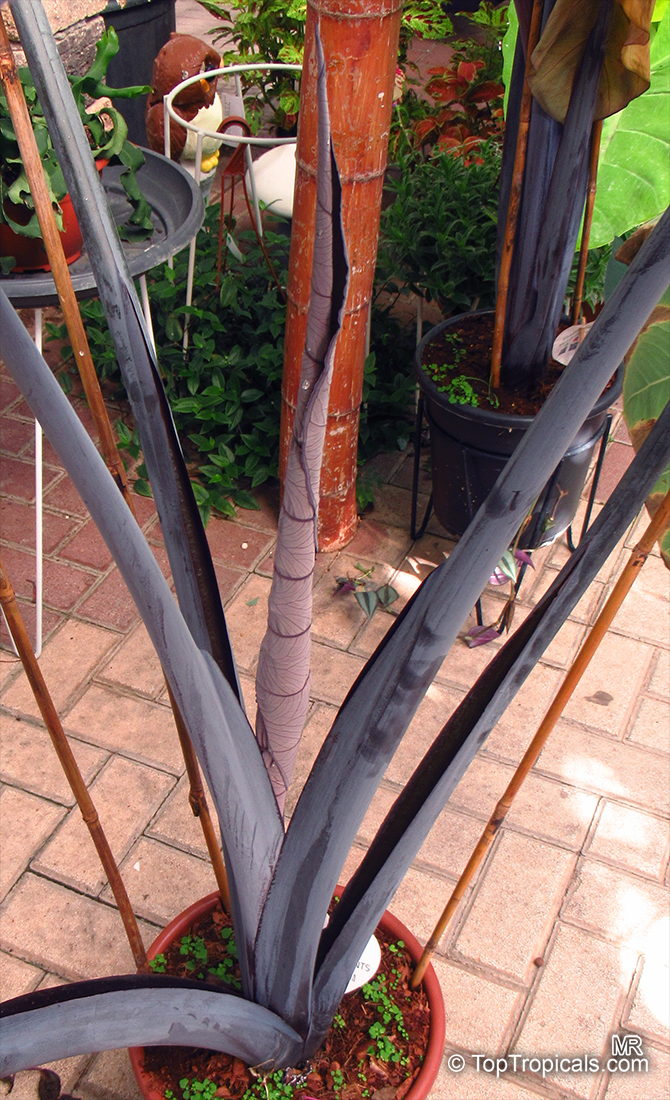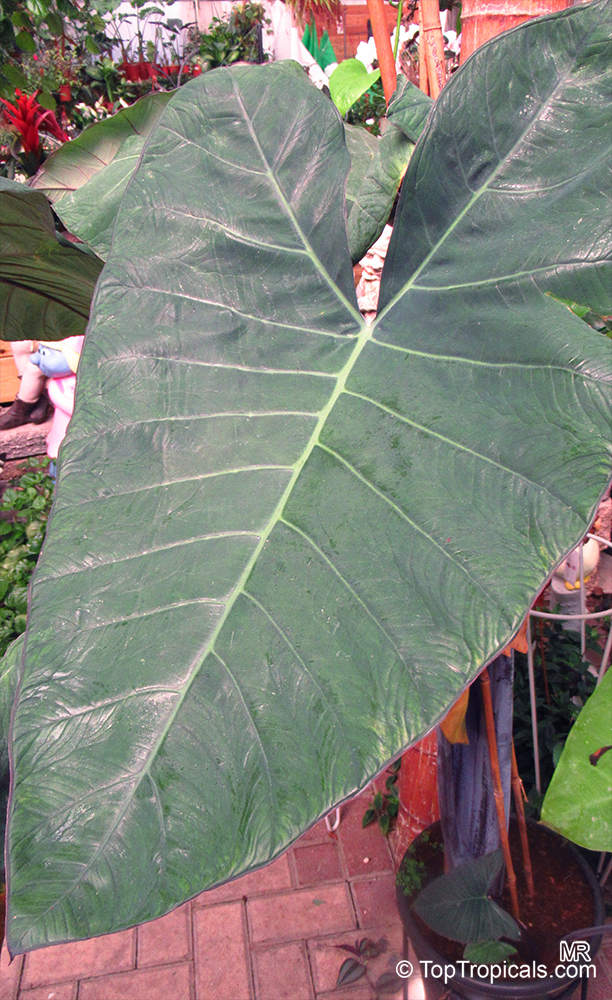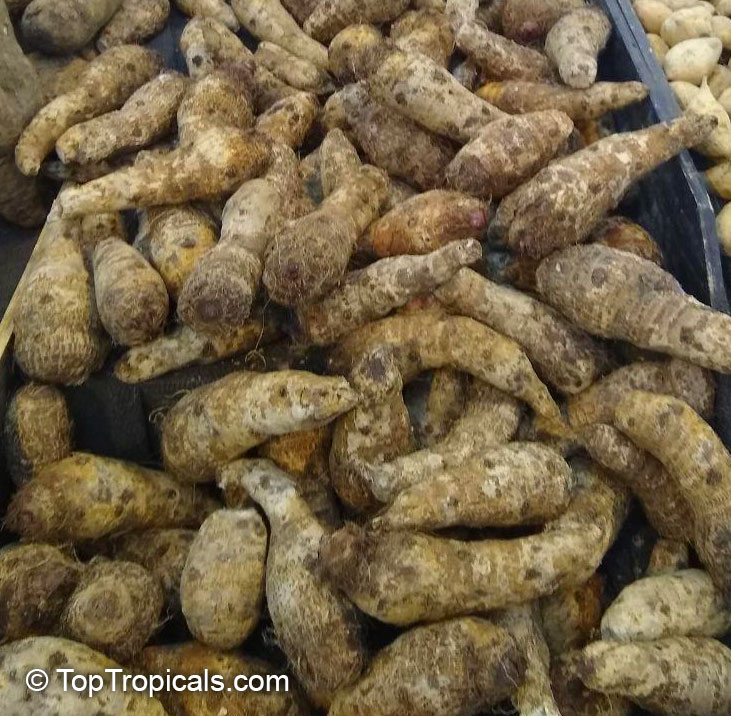Xanthosoma sagittifolium (Tannia)
Top Tropicals Plant Encyclopedia
Botanical names: Xanthosoma sagittifolium, Xanthosoma violaceum, Xanthosoma atrovirens, Arum nigrum, Xanthosoma nigrum
Common names: Tannia, Malanga Blanca, Yautia, Cocoyam, Eddo, Coco, Sato-imo, Japanese Potatoes
Family: Araceae
Origin: South America







Malanga (Xanthosoma sagittifolium) is a tropical plant that prefers full sun to semi-shade and regular watering throughout the growing season. The plant is grown in USDA Plant Hardiness Zone 8-11.
The Xanthosoma species are plants of the tropical rainforest, and although they grow under the forest canopy in their natural habitat, under cultivation they are usually sown with full exposure to sunlight. They require well-drained soils and do not tolerate overwatering. The usable parts are the tubers, which have a nutritional value comparable to the potato. A secondary use is the consumption of young leaves, similar to spinach. Leafy species of Xanthosoma not grown for tubers are called 'belembe' and 'calalous'.
There are two different types of malanga: Malanga Blanca (Xanthosoma sagittifolium), considered the true malanga, which grows on dry land, and Malanga Amarillo (Colocasia esculenta ), which grows in wet bog-like areas. Cultivars with purple stems or leaves are also variously called Blue Taro, Purple Taro, Purplestem Tannia, and Purple Elephant's Ear among others.
Malanga is known for its high calcium and iron content and has been used in traditional ethnomedical healing to reduce inflammation. This edible tropical root has a high fiber content, making it ideal for maintaining a healthy weight. The starch grains are also the smallest and most easily digested of all complex carbohydrates, making it easier for those who suffer from food allergies. Malanga flour is used as a substitute for wheat flour to make cookies, quick breads, and similar items.
Edible tubers (cormels) are formed in the soil at the base of the plant. A central large tuber (corm) is formed, with a cluster of cormels, grayish brown to black lateral tubers, around it. Malanga are about the size and shape of a regular white potato; they look a little like an overgrown gladiola bulb, with brown and somewhat hairy skin. The interior has an extremely crisp texture and can vary in color from cream, yellow, or pink.
Similar, rare and hard-to-find Xanthosoma albomarginata has beautiful variegated foliage that is mottled in white and hues of green. The tips of the leaves have a curious cupped formation.
